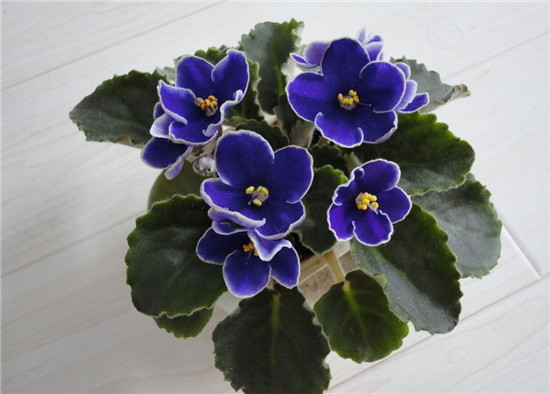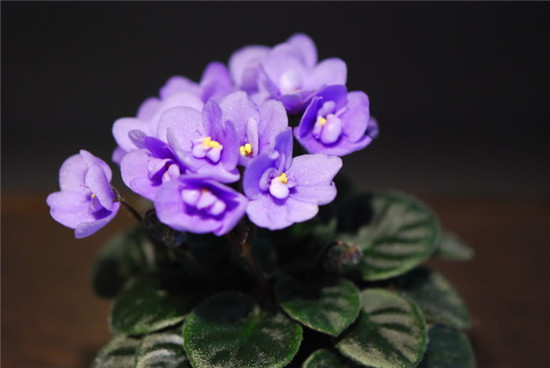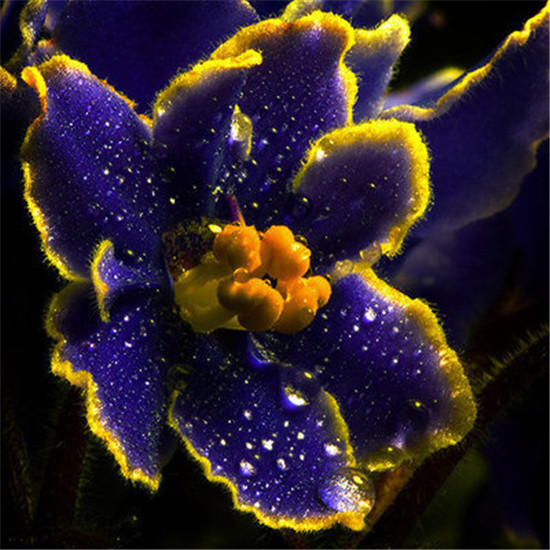[African Violet] Tips for planting African Violet
African violets are a common plant, and it is not easy to grow African violets well. next, let's take a look at the tips for growing African violets.

African violets are native to the eastern tropics of Africa. Like warmth. Moist and semi-overcast environment. I am afraid of bright light and high temperature in summer. The optimum temperature for production is 16-24 ℃, 18-24 ℃ from April to October, and 12-16 ℃ from October to April of the following year. The daytime temperature is no more than 30 ℃, and the high temperature is disadvantageous to the growth of African violets. The night temperature in winter is not lower than 10 ℃, otherwise it is easy to suffer frost injury. The relative humidity of 40% ROK 70% is more suitable, the basin is too humid, easy to rot roots. The air is dry and the leaves lack luster. African violets need shade in summer, with green leaves; in winter, they are sunny enough to blossom continuously; rain and snow plus auxiliary light are very beneficial to the growth and flowering of African violets.
African Violet prefers semi-overcast, warm and humid environment. The suitable temperature for growth is 20-22 ℃, and the suitable light intensity is between 10000-12000lx. Avoid strong light and high temperature in summer, spray shading agent or use shading net on cultivation facilities, cover strong light, and spray water to cool and humidify, but pay attention to good ventilation. In the process of cultivation, high air humidity should be maintained and properly watered so as not to get too wet so as to avoid stem and leaf rot.

The difference between water temperature and air temperature should be less than 5 ℃, otherwise, a large number of yellow spots will be produced on the leaf surface. If the light is insufficient, the flowers will be few and the color will be light, even only the long leaves will not blossom; if the light is too strong, it will cause the leaves to turn yellow and scorch, which can be maintained in a place with bright light and no direct sunlight. The suitable temperature for growth is 16 ℃ to 24 ℃, and not less than 10 ℃ in winter. It is necessary to avoid sudden rise and fall of temperature in cultivation, otherwise the plant is easy to die.
Keep it in a cool and ventilated place in summer to avoid hot and humid environment and hot sun exposure. Usually watering should not be too much, to wait until the basin soil is slightly dry before watering, basin soil stagnant water is often the main cause of plant decay. During the growing period, the mature thin liquid fertilizer or compound chemical fertilizer is applied every 7 to 10 days, the content of nitrogen fertilizer in the fertilizer should not be too much, otherwise the leaves will grow luxuriantly and bloom very little.

Culture methods of African violets
Planting
As the plant of African violets is short and the root system is not widely distributed, too large flowerpots hinder elegance, too small and affect growth and development, so it is necessary to choose small flowerpots commensurate with plant size. The basin soil should be loose and fertile, and the soil rich in humus should be used. It is generally mixed with 5 parts of rotten leaf soil, 3 parts of garden soil, 2 parts of rotten stable fertilizer soil, or 6 parts of rotten leaf soil and 4 parts of Gaza loam. it can also be mixed with rotten leaf soil, peat soil and sandy soil.
Fertilizer application
Fertilizer should be light. During the period of growth and development, rarefied mature liquid fertilizer or compound fertilizer combined with nitrogen and phosphorus should be applied once every 10 days, but it should be noted that the nitrogen fertilizer should not be too much, otherwise the leaves will grow luxuriantly but bloom rarely. For this reason, 1:1:1 is the best ratio of nitrogen, phosphorus and potassium fertilizer. Adding 0.5% superphosphate 1-2 times after the appearance of flower buds will make the flower large and colorful. Fertilizing also need to gently lift the leaves, do not make fat and water on the leaves, so as to avoid leaf spots and rot.
Watering
Because the plant is short and the root system is delicate, it can not be watered too much, and the potted soil is too wet and easy to rot the root. Watering should grasp the principle of seeing dry and wet, in addition to sufficient watering in summer, it is appropriate to wait for the basin soil to be slightly white in other seasons. When watering, lift the leaves, gently irrigate from the edge of the basin, or use the soaking method to replenish water, do not sprinkle at the head, otherwise the leaves are easy to rot.

Temperature, light
Although African violets like to be warm, they are not resistant to high temperature. the suitable temperature for growth is 18-24 ℃, but the growth is poor when the temperature is more than 27 ℃, so shading and cooling measures must be taken in midsummer, and the growth will stop when the air temperature drops below 16 ℃. African Violet can endure a low temperature of 7-10 ℃ for a short time, so the room temperature in winter should not be lower than 12 ℃.
African Violet is a shade-tolerant plant, if the light in the conservation site is too strong, the leaves will lose their bright luster, yellow spots appear on the leaves, or the leaves turn yellow, or become scorched, etc.; but if the maintenance site is too shady for a long time, they will blossom less and the color will be light, or only long leaves will not blossom, or flowering very little. Therefore, family conservation should control the lighting conditions, in addition to winter need to be placed in the most sunny place, other seasons should be placed in the place with scattered light maintenance, and summer to avoid direct sunlight, it is best to put in shade and cool ventilation.
These are all the tips I have summarized for you on the cultivation of African violets. I hope this article can help you. Please continue to follow us.
And summer should avoid direct sunlight, had better put in shade and cool ventilated place.
These are all the tips I have summarized for you on the cultivation of African violets. I hope this article can help you. Please continue to follow us.
Related
- Wuhan Hospital Iron Tree Blooming Result Was Instantly Frightened by the Gardener Master
- Which variety of camellia is the most fragrant and best? Which one do you like best?
- What is the small blue coat, the breeding methods and matters needing attention of the succulent plant
- Dormancy time and maintenance management of succulent plants during dormancy
- Minas succulent how to raise, Minas succulent plant pictures
- What are the varieties of winter succulent plants
- How to raise succulent plants in twelve rolls? let's take a look at some experience of breeding twelve rolls.
- Attention should be paid to water control for succulent plants during dormant period (winter and summer)
- Watering experience of twelve rolls of succulent plants
- Techniques for fertilizing succulent plants. An article will let you know how to fertilize succulent plants.



